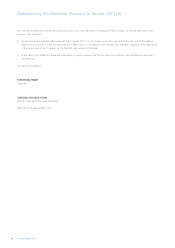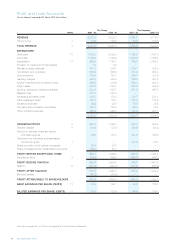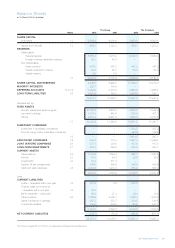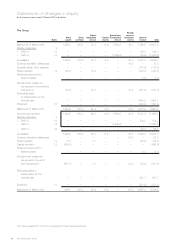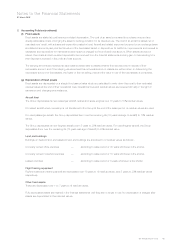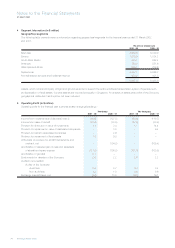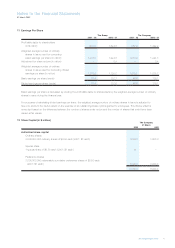Singapore Airlines 2002 Annual Report Download - page 67
Download and view the complete annual report
Please find page 67 of the 2002 Singapore Airlines annual report below. You can navigate through the pages in the report by either clicking on the pages listed below, or by using the keyword search tool below to find specific information within the annual report.
67
Notes to the Financial Statements
31 March 2002
SIA Annual Report 01/02
2 Accounting Policies (continued)
(f) Fixed assets
Fixed assets are stated at cost less accumulated depreciation. The cost of an asset comprises its purchase price and any
directly attributable costs of bringing the asset to working condition for its intended use. The cost of all aircraft is stated net of
manufacturers’ credit, with subsequent expenditure stated at cost. Aircraft and related equipment acquired on an exchange basis
are stated at amounts paid plus the fair value of the fixed asset traded-in. Expenditure for additions, improvements and renewal is
capitalized and expenditure for maintenance and repairs is charged to the profit and loss account. When assets are sold or
retired, their costs and accumulated depreciation are removed from the financial statements and any gain or loss resulting from
their disposal is included in the profit and loss account.
The carrying amounts are reviewed at each balance sheet date to assess whether they are recorded in excess of their
recoverable amount, and if the carrying values exceed this recoverable amount, assets are written-down. In determining the
recoverable amount for fixed assets, the higher of the net selling price and the value in use of the fixed assets is considered.
(g) Depreciation of fixed assets
Fixed assets are depreciated on a straight-line basis at rates which are calculated to write-down their cost to their estimated
residual values at the end of their operational lives. Operational lives and residual values are reviewed annually in the light of
experience and changing circumstances.
Aircraft fleet
The Group depreciates its new passenger aircraft, spares and spare engines over 15 years to 10% residual values.
For leased aircraft where ownership is not transferred to the Group at the end of the lease period, nil residual values are used.
For used passenger aircraft, the Group depreciates them over the remaining life (15 years less age of aircraft) to 10% residual
values.
The Group depreciates its new freighter aircraft over 15 years to 20% residual values. For used freighter aircraft, the Group
depreciates them over the remaining life (15 years less age of aircraft) to 20% residual value.
Land and buildings
Buildings on freehold land and leasehold land and buildings are amortized to nil residual values as follows:-
Company owned office premises — according to lease period or 30 years whichever is the shorter.
Company owned household premises — according to lease period or 10 years whichever is the shorter.
Leased premises — according to lease period or 5 years whichever is the shorter.
Flight training equipment
Flight simulators and training aircraft are depreciated over 10 years to nil residual values, and 5 years to 20% residual values
respectively.
Other fixed assets
These are depreciated over 1 to 7 years to nil residual values.
Fully depreciated assets are retained in the financial statements until they are no longer in use. No depreciation is charged after
assets are depreciated to their residual values.



